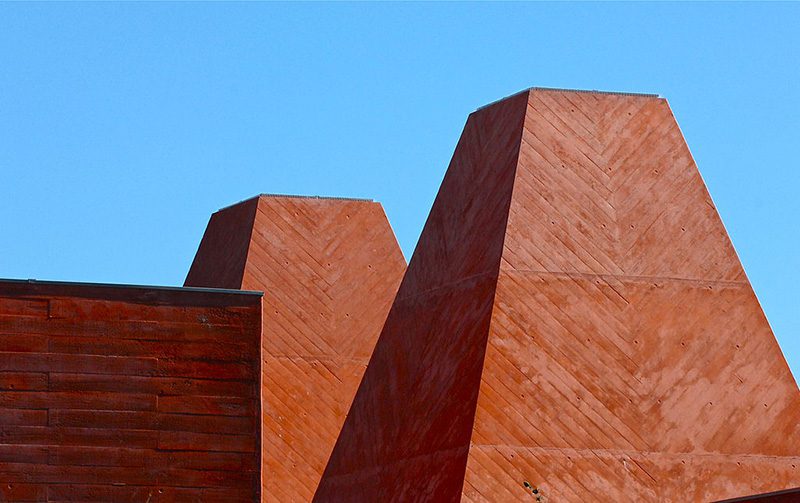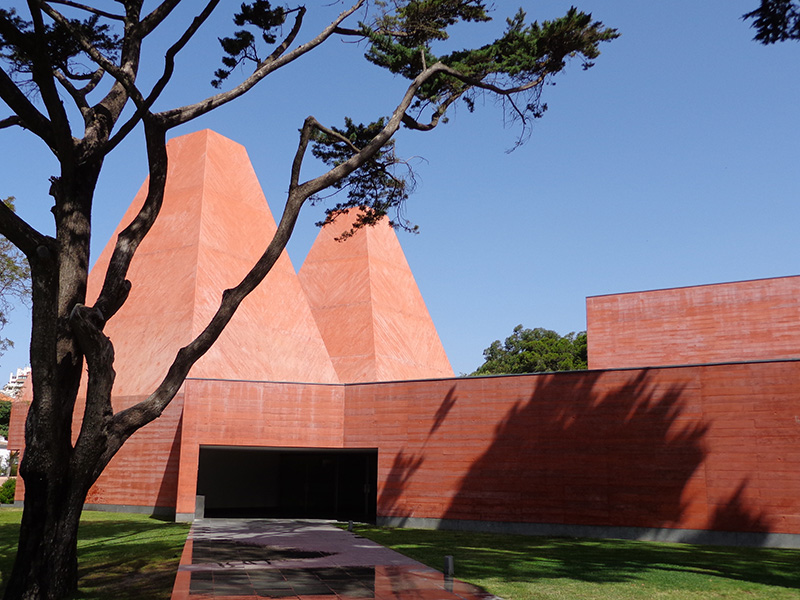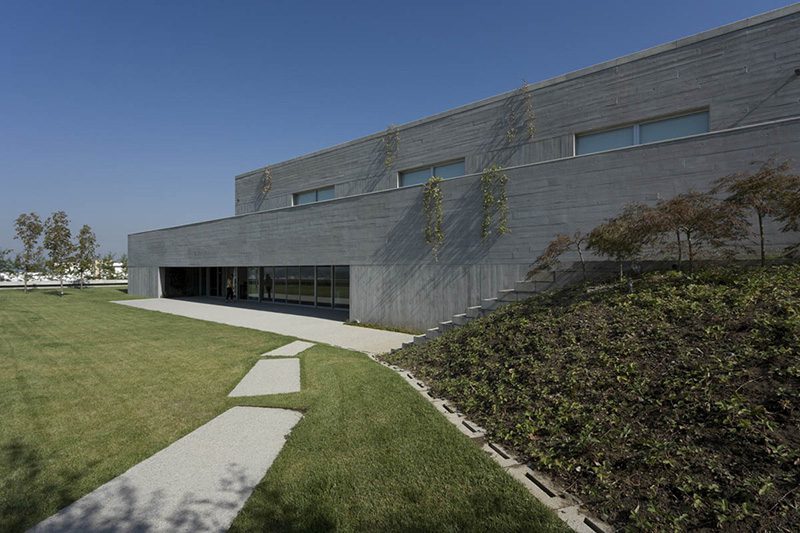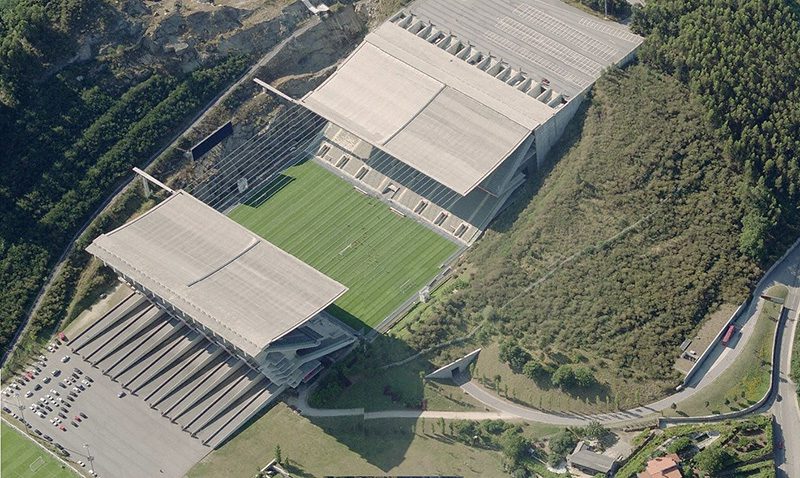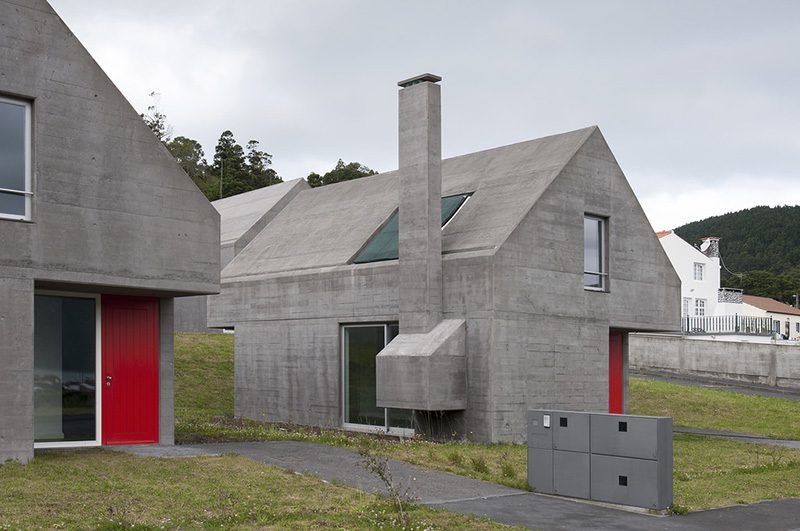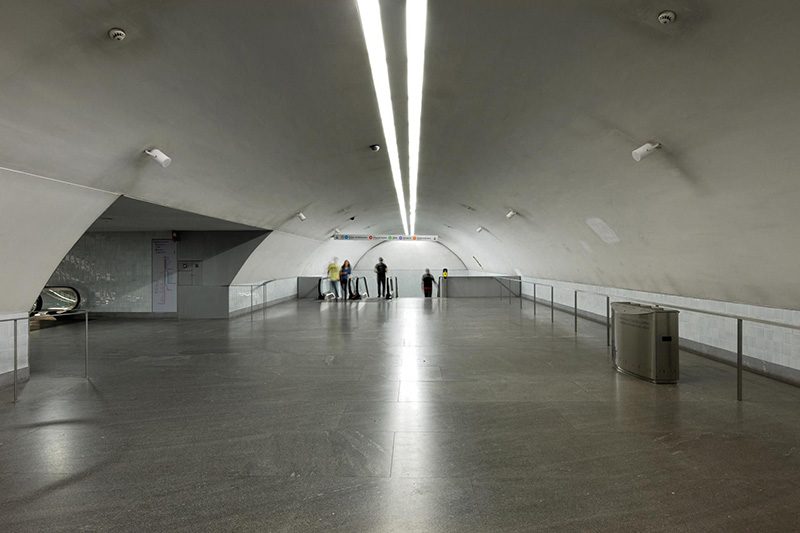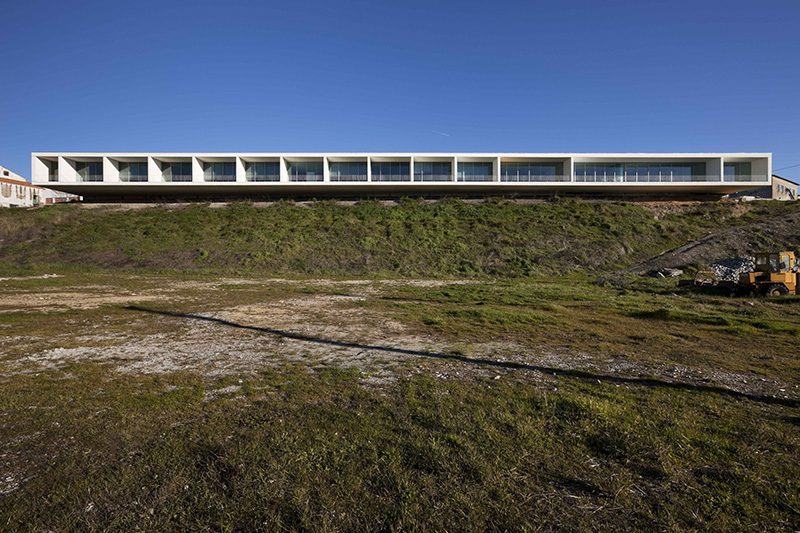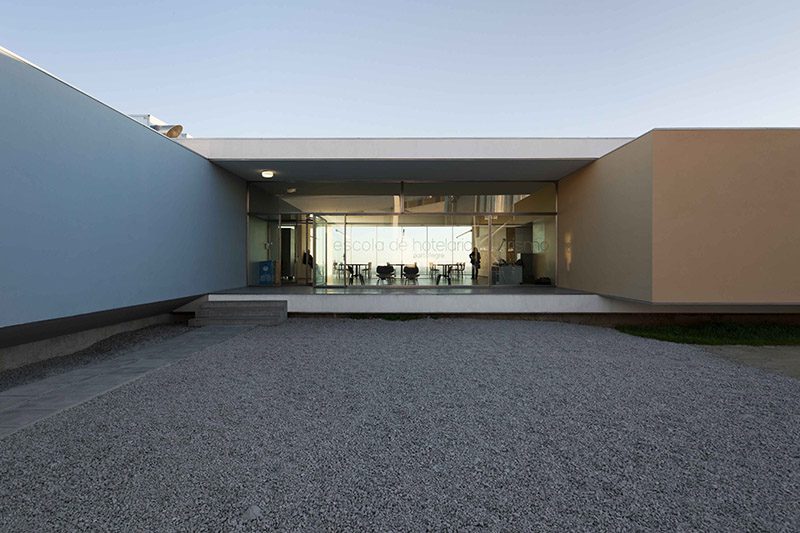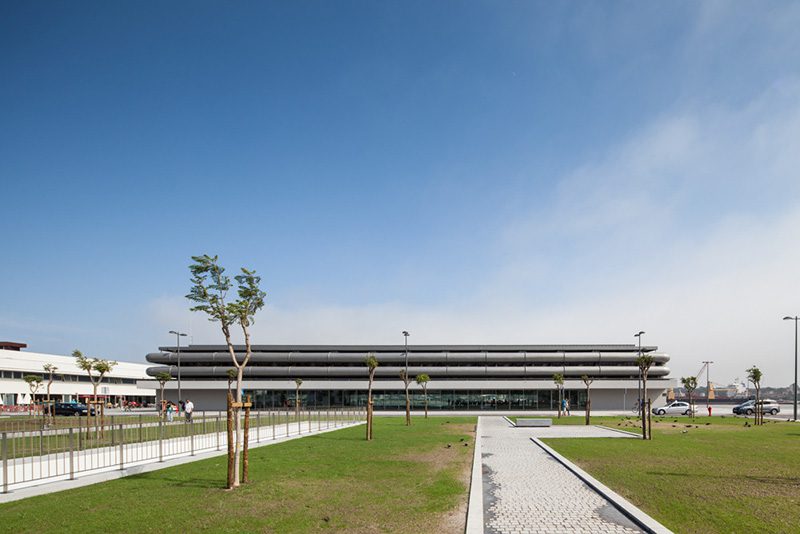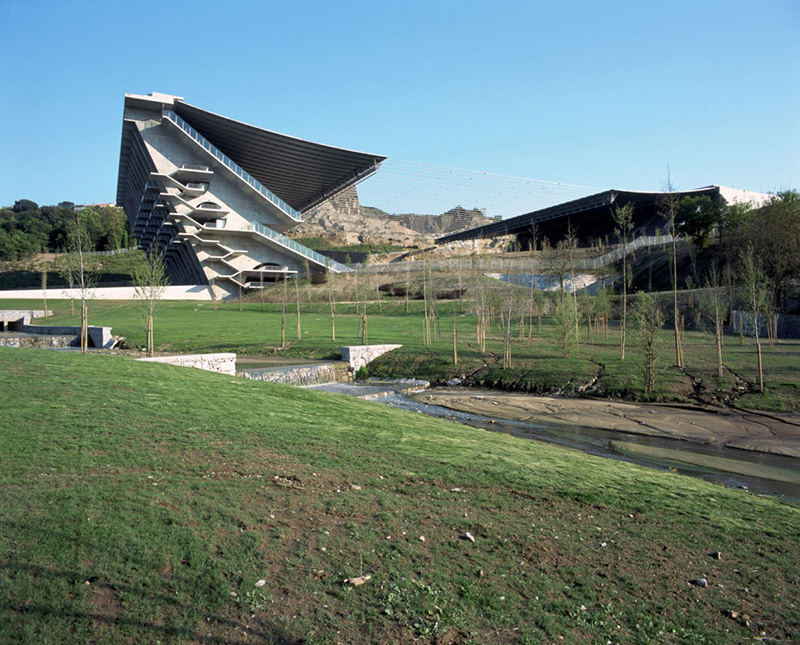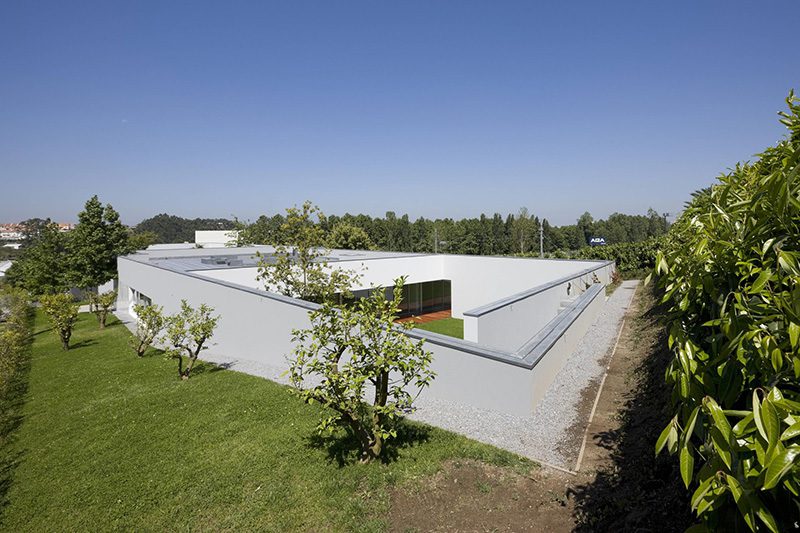ARCHITECTURE: Eduardo Souto de Moura
 The work of Eduardo Souto de Moura (25/7/1952- ), combines the abstract minimalism of Mies van der Rohe with a tactile sensitivity and the use of local materials and building techniques. He is one of just two Portuguese recipients of the Pritzker Prize (the other being Álvaro Siza) yet he has never achieved the same International renown as his much fêted colleague. That might seem unreasonable, but considering the fact that Souto de Moura has built very few buildings outside of his native country and that he does not have the same trademark style as Siza, it’s not all that surprising.
The work of Eduardo Souto de Moura (25/7/1952- ), combines the abstract minimalism of Mies van der Rohe with a tactile sensitivity and the use of local materials and building techniques. He is one of just two Portuguese recipients of the Pritzker Prize (the other being Álvaro Siza) yet he has never achieved the same International renown as his much fêted colleague. That might seem unreasonable, but considering the fact that Souto de Moura has built very few buildings outside of his native country and that he does not have the same trademark style as Siza, it’s not all that surprising.
By Dimitris Lempesis
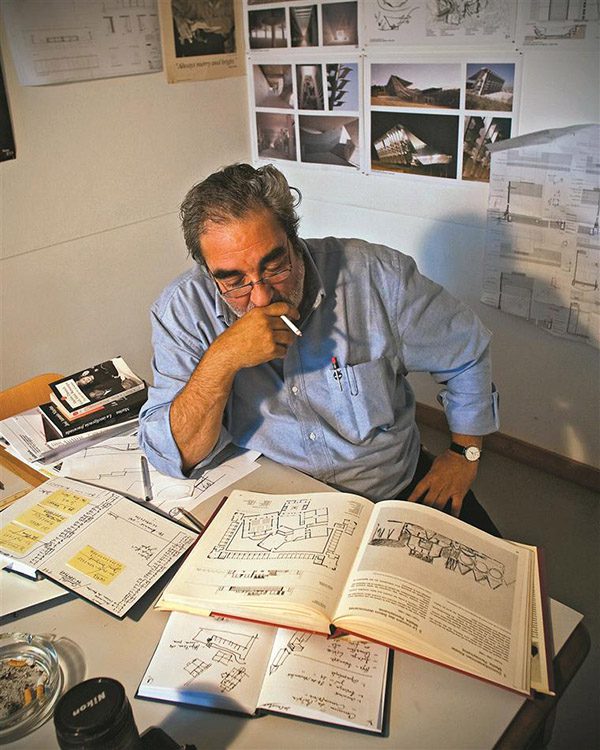 Following his early years at the Italian School, Souto de Moura enrolled in the School of Fine Arts in Porto, where he began as an art student, studying sculpture, but eventually achieving his degree in architecture in 1980. He credits a meeting with Donald Judd in Zurich for the switch from art to architecture. While still a student, he worked for architect Noé Dinis and then Álvaro Siza, years. While studying and working with his professor of urbanism, Architect Fernandes de Sá, he received his first commission, a market project in Braga which has since been demolished because of changing business patterns. He began his career as an independent architect in 1980, after winning a design competition for the Casa das Artes, a cultural center in Porto. In the first decades he primarily focused on residential houses and renovations. However, having gained a fair amount of visibility after designing the Portuguese Pavilion for the EXPO 2000 in Hannover (along with his good friend and one-time employer Álvaro Siza) Souta de Moura’s projects started to vary considerably in both scale and expression. The Burgo Towe in Portugal, designed at the beginning of the ‘90s and built a decade later, consists of two buildings side by side, one vertical and one horizontal with different scales, in dialogue with each other and the urban landscape, the Paula Rêgo Museum, completed in 2008, a grouping of volumes interspersed in the trees at its site in Cascais, Portugal, is both civic and intimate, and so appropriate for the display of art. Other key projects include a museum in Cascais, Portugal, dedicated to the work of local artist Paula Rego, which is composed of a set of geometric volumes in red concrete, and an office complex in Porto that combines a vertical tower and a low, horizontal building. Most recently, he completed a multi-purpose hall extruding from the ground in the small Portuguese seaside town of Viana de Castelo. Aside from the Pritzker Prize, which Souto de Moura received in 2011, he was awarded the Wolf Prize in Arts in 2013 and the Pessoa Prize in 1998 among many others. He also has an honorary doctorate from the Faculty of Architecture and Arts at the Lusíada University in Porto.
Following his early years at the Italian School, Souto de Moura enrolled in the School of Fine Arts in Porto, where he began as an art student, studying sculpture, but eventually achieving his degree in architecture in 1980. He credits a meeting with Donald Judd in Zurich for the switch from art to architecture. While still a student, he worked for architect Noé Dinis and then Álvaro Siza, years. While studying and working with his professor of urbanism, Architect Fernandes de Sá, he received his first commission, a market project in Braga which has since been demolished because of changing business patterns. He began his career as an independent architect in 1980, after winning a design competition for the Casa das Artes, a cultural center in Porto. In the first decades he primarily focused on residential houses and renovations. However, having gained a fair amount of visibility after designing the Portuguese Pavilion for the EXPO 2000 in Hannover (along with his good friend and one-time employer Álvaro Siza) Souta de Moura’s projects started to vary considerably in both scale and expression. The Burgo Towe in Portugal, designed at the beginning of the ‘90s and built a decade later, consists of two buildings side by side, one vertical and one horizontal with different scales, in dialogue with each other and the urban landscape, the Paula Rêgo Museum, completed in 2008, a grouping of volumes interspersed in the trees at its site in Cascais, Portugal, is both civic and intimate, and so appropriate for the display of art. Other key projects include a museum in Cascais, Portugal, dedicated to the work of local artist Paula Rego, which is composed of a set of geometric volumes in red concrete, and an office complex in Porto that combines a vertical tower and a low, horizontal building. Most recently, he completed a multi-purpose hall extruding from the ground in the small Portuguese seaside town of Viana de Castelo. Aside from the Pritzker Prize, which Souto de Moura received in 2011, he was awarded the Wolf Prize in Arts in 2013 and the Pessoa Prize in 1998 among many others. He also has an honorary doctorate from the Faculty of Architecture and Arts at the Lusíada University in Porto.



